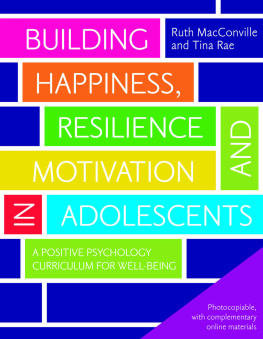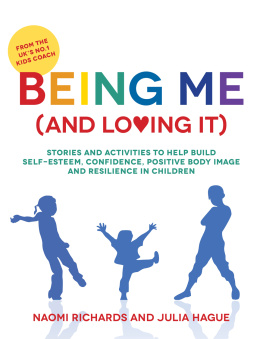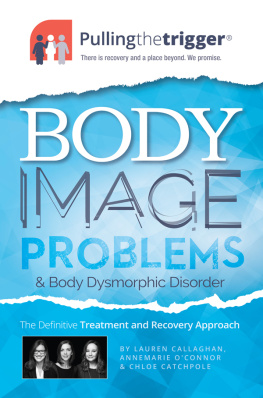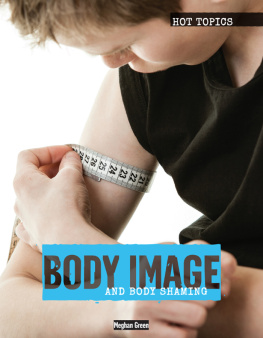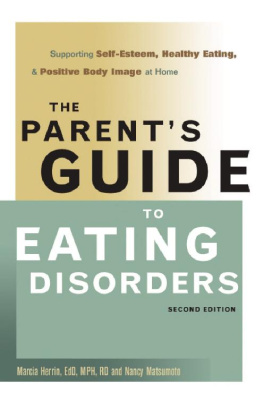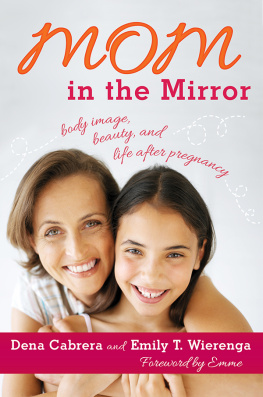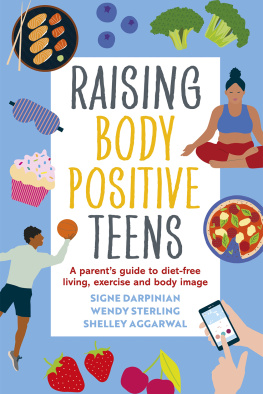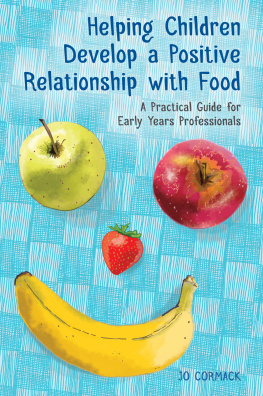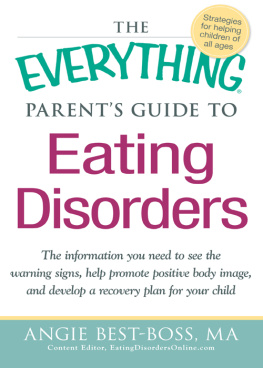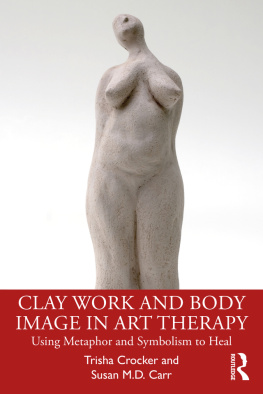
POSITIVE BODY IMAGE
in the
EARLY YEARS
A Practical Guide
RUTH MA C CONVILLE

Jessica Kingsley Publishers
London and Philadelphia
Contents
Introduction
Welcome to this book! Positive Body Image in the Early Years is a practical guide to promoting body confidence in young children. There is often an assumption that body image issues start later in childhood and there is a wealth of research which exists around how older children suffer from low self-esteem as a result of body image anxieties. However, recent research findings, as well as clinical case reports, suggest that young children between the ages of three and six years already have negative attitudes towards fat, have a preference for a thin body Wand, as early as the preschool years, can perceive their body image as accurately as adults (Tremblay et al., 2011). By the age of three or four years, an increasing number of young children are already beginning to feel unhappy about their appearance and show body dissatisfaction. Body dissatisfaction has serious implications for a young childs social, emotional and physical wellbeing and is highly predictive of later eating disorders and chronic health problems (Tatangelo et al. , 2016).
However, despite this increased awareness, there have been very little practical advice and guidance available to early years practitioners on how to approach this issue. I have written this book to fill this gap. Early years settings provide a unique opportunity to instil positive body messages in children and their parents and to prevent body image concerns escalating in later childhood and adolescence. I sincerely hope that this resource will support early years practitioners in this process and that it provides an effective tool kit for early years practitioners to enable young children to be body confident.
First, do no harm
Crucial to this book is one of the most basic principles of modern medicine first, do no harm. There have been warnings about the potential to do more harm than good when attempting to prevent eating disorders (Garner, 1988; ODea, 2000) and these warnings are equally applicable to the prevention of body dissatisfaction in young children. Young children need to know, for example, that they can enjoy a variety of different foods in a balanced diet and they need to be enabled to do so in a positive, motivating learning environment. Negative messages or those that produce guilt or fear of food are likely to do more harm than good (ODea, 2000). The development of body dissatisfaction in a young child where none previously existed may well constitute emotional harm.
A self-esteem approach
This book does not recommend addressing body image directly or head on with young children. To do so may actually create the idea in childrens minds that their body is not good enough, and that a better body may exist. It risks planting concerns and worries where none may have previously existed. Dr Aric Sigman (2014, p.182) writes in his book The Body Wars: Why Body Dissatisfaction Is at Epidemic Proportions and How We Can Fight Back :
childrens bodies should not be objectified. If anything, they should be thought about less, talked about less and merely taken for grantedchildren need to alter their focus and emotional resources away from bodies and appearance.
In this book I take a self-esteem approach to promoting body confidence in young children. Enabling children to enjoy mastery experiences and positive relationships with others helps them to feel good about themselves. A self-esteem approach also involves encouraging young children to think about their body in terms of what it can do, rather than how it looks.
Early years settings are ideal places to teach children about diversity. Although young children will naturally compare themselves with others, it is important to talk about each individuals uniqueness and to recognise that nobody is the same and that is what makes everyone individual. The early years, when children are developing their social skills, is also the best time to plant the seeds of acceptance and respect for others and teach about differences from a positive point of view. Early years practitioners who actively encourage discussion and appreciation of differences and individuality will enable all children to develop self-confidence and feel valued. Early years practitioners are highly skilled at modelling respect, how to get along with others, be healthy and how to have fun. All of these skills can, in Sigmans (2014, p.182) words, alter young childrens focus and emotional resources away from bodies and appearance and enable young children to remain body confident.
CHAPTER 1
What Is Body Image?
The term body image refers to our perception of how our body looks and how it is viewed by others. It is the opinion that we hold about our physical appearance, and includes how we feel about the size, shape, weight and look of our bodies. Our body image is independent of our actual size, shape or appearance and it is not always a true reflection of what our body actually looks like. Anyone, whatever they look like , can have a positive or a negative body image (Hutchinson and Calland, 2011).
We all feel a certain way about the way that we look. Some people have a positive body image and appreciate and love their bodies, whilst others may dislike their body and feel that there is something wrong with their appearance. When we feel dissatisfied with our body it is often because we believe that it is not the right shape or size.
Our body image is not fixed; it is susceptible to change by the influences around us. This means that we can improve our body image by minimising all the things that have a negative effect on how we feel about our appearance.
A positive body image helps children to feel good about themselves and supports their mental health and wellbeing in childhood and beyond. Children with a positive body image, who are comfortable with how they look, are more likely to think about their body in terms of its functionality rather than its appearance. This means that they focus on what their body enables them to do, like playing games, running and jumping, rather than on how they look. Children with a positive body image may not be completely satisfied with their appearance but they are realistic and recognise that their appearance is only one part of who they are; they concentrate on its positive features rather than on its faults. This way of thinking contributes to a childs overall sense of self-worth. A positive body image also helps a child to take care of their body and be attentive to its needs; they are more likely to make healthy food choices and enjoy being active.
A positive body image means:
being happy with how your body actually is
feeling comfortable with your body
feeling satisfied with how you look
realising that the perfect body does not exist
recognising that who you are as a person is more important than how you look
knowing that the health of your body is more important than how it looks
learning to appreciate your body and what it can do for you.
(adapted from Collins-Donnelly, 2014)
The key characteristics of positive body image
Body appreciation
Appreciating the health of the body
Appreciating the body for what it can do more than for its appearance
Body acceptance and love
Expressing comfort with and love for the body, despite not being completely satisfied with all its aspects
Choosing to focus on body assets rather than perceived body flaws


